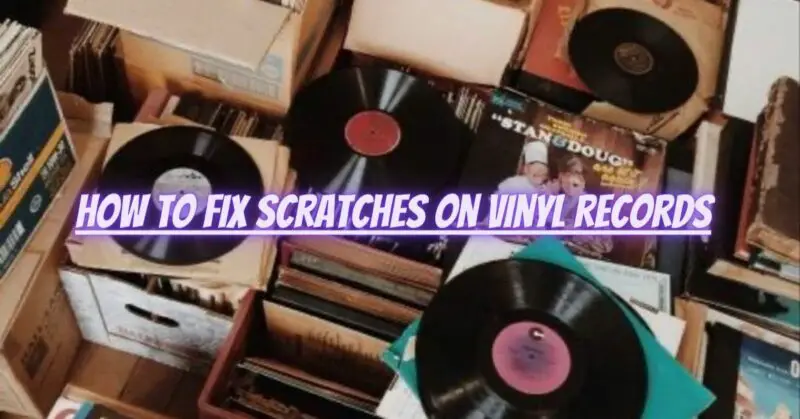Vinyl records are not immune to the occasional scratch, which can impact their sound quality and listening experience. While prevention is always the best approach, accidents can happen. If you discover scratches on your vinyl records, there are steps you can take to minimize their impact and restore the sound quality. In this article, we will explore techniques and tips for fixing scratches on vinyl records.
- Assess the Severity of the Scratch: Before attempting any repair methods, examine the scratch’s depth and length. Superficial, light scratches are generally easier to fix compared to deep or long scratches that may require professional intervention. It’s important to note that while these techniques can improve playback, they may not completely eliminate the scratch.
- Cleaning the Record: Begin by gently cleaning the record using a record cleaning solution and a soft, lint-free cloth. Removing dust and debris from the surface will help you better assess the scratch and prevent additional damage during the repair process.
- Vinyl Repair Kit: Consider using a vinyl repair kit specifically designed to address surface scratches. These kits usually include a specialized solution and a soft brush or applicator. Follow the instructions provided with the kit to apply the solution to the scratched area and gently work it into the groove. Wipe away any excess solution and let it dry according to the recommended time frame.
- DIY Solutions: Several DIY methods can help minimize the appearance and impact of scratches on vinyl records:
- Pencil Eraser Technique: Use a soft white eraser (avoid colored or abrasive erasers) to gently rub the scratch in the direction of the grooves. This method may help reduce the prominence of shallow scratches, but be cautious not to apply excessive pressure or create additional damage.
- Toothpick and Wood Glue Method: Apply a small amount of wood glue (such as PVA or white glue) to the scratch using a toothpick. Allow the glue to dry completely, forming a layer that fills the scratch. Once dry, carefully remove any excess glue using a toothpick or a soft cloth. This method can help improve the playback of shallow scratches, but it requires precision and caution.
- Seek Professional Help: If the scratches are deep, numerous, or cover a significant portion of the record, it may be best to consult a professional record restoration service or a vinyl repair specialist. These experts have the expertise and specialized equipment to repair and restore damaged records effectively.
Important Tips:
- Always handle vinyl records by the edges to avoid further damage.
- Avoid using harsh chemicals, abrasive materials, or excessive force during the repair process.
- Prevention is key; store records properly in protective sleeves, handle them carefully, and use a high-quality turntable with a clean stylus to minimize the risk of scratches.
Conclusion: While scratches on vinyl records can be disheartening, there are steps you can take to minimize their impact and restore the sound quality. Assess the severity of the scratch and consider using a vinyl repair kit or trying DIY methods like the pencil eraser technique or the toothpick and wood glue method. Remember to proceed with caution, as these methods may not completely eliminate scratches, and seeking professional help is advisable for significant or deep damage. By following these tips and maintaining proper care for your vinyl records, you can enjoy the best possible sound quality and extend the lifespan of your cherished collection.


